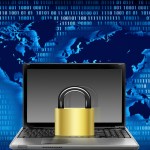Locker ransomware author apologises posts decrypt keys
New trends in malware are always a hot security topic, with experts trying to predict what might come next and determine how companies can best protect their assets. It’s unlikely, however, that anyone saw this coming: The author of the file-encrypting Locker ransomware has publicly apologized and provided the free decryption keys for any compromised files. While there’s no word on why the cybercriminal had a change of heart and decided to own up, it’s certainly an interesting security development. Has malware finally become so ubiquitous that to stay relevant malicious actors must display some kind of conscience?
Rise and Shine With Locker Ransomware
As noted by Network World, the Locker ransomware was a so-called “sleeper,” which lays dormant on user systems for weeks or even months after being offloaded by a Trojan.Downloader. On May 25, a command was sent to install Locker on all affected computers and then started scanning for files to encrypt — everything from .doc to .ppt, .jpg to .raw. Removable drives were also scanned and encrypted.
Once encryption was complete, users received a message saying that their files were no longer accessible; their return cost 0.1 bitcoin (around $24), which increased to 1 bitcoin after 72 hours. But on May 30, a post was made on Pastebin by “Poka BrightMinds,” stating that he or she authored the malware and was “very sorry about what happened.” The post claimed the malware was never intended for release, that all new infections had stopped and that on June 2 at midnight, all infected computers would be automatically decrypted — and that’s exactly what happened. But security researchers are now left wondering why.
Compassionate Criminal?
There are several lines of speculation when it comes to the Locker ransomware turnaround. Some experts suggested that the author had made enough money from the efforts and decided to quit while ahead, or that the creator ran afoul of law enforcement. CEO of KnowBe4 Stu Sjouwerman suggested the attack didn’t have the hallmarks of “an experienced cybercriminal” and postulated that the author might have been affiliated with an organized crime outfit, decided to go solo and then had the plan backfire.
The malware itself is a little more forgiving than similar encryption attacks. For instance, on the splash screen displayed after files are locked down, Locker stated that “you can still safely use your computer, no new files will be encrypted and no malware will be installed,” according to a post on KnowBe4. The author also told the truth about decryption: Infected computers were cleared, and keys were also provided for users who had already cleared the infection but still had locked files. The act and apology weren’t entirely noble, however, since the creator didn’t offer to return any stolen bitcoins, and it’s hard to believe that this kind of sleeper malware was simply designed as a thought experiment. There’s also the disturbing notion that the apology itself may be yet another trick. Did the automatic decrypt leave anything else behind? Perhaps another, even more subtle piece of malware?
Apparently, malware creators are human, too, and can suffer attacks of conscience. In the case of the Locker ransomware, users had files returned and computers cleared but were still out any bitcoins. Perhaps this marks the dawning of a “compassionate criminal” era in malware development — but apology or not, it comes with a cost.
MailShark
Free anti-spam service
Free email filter service











